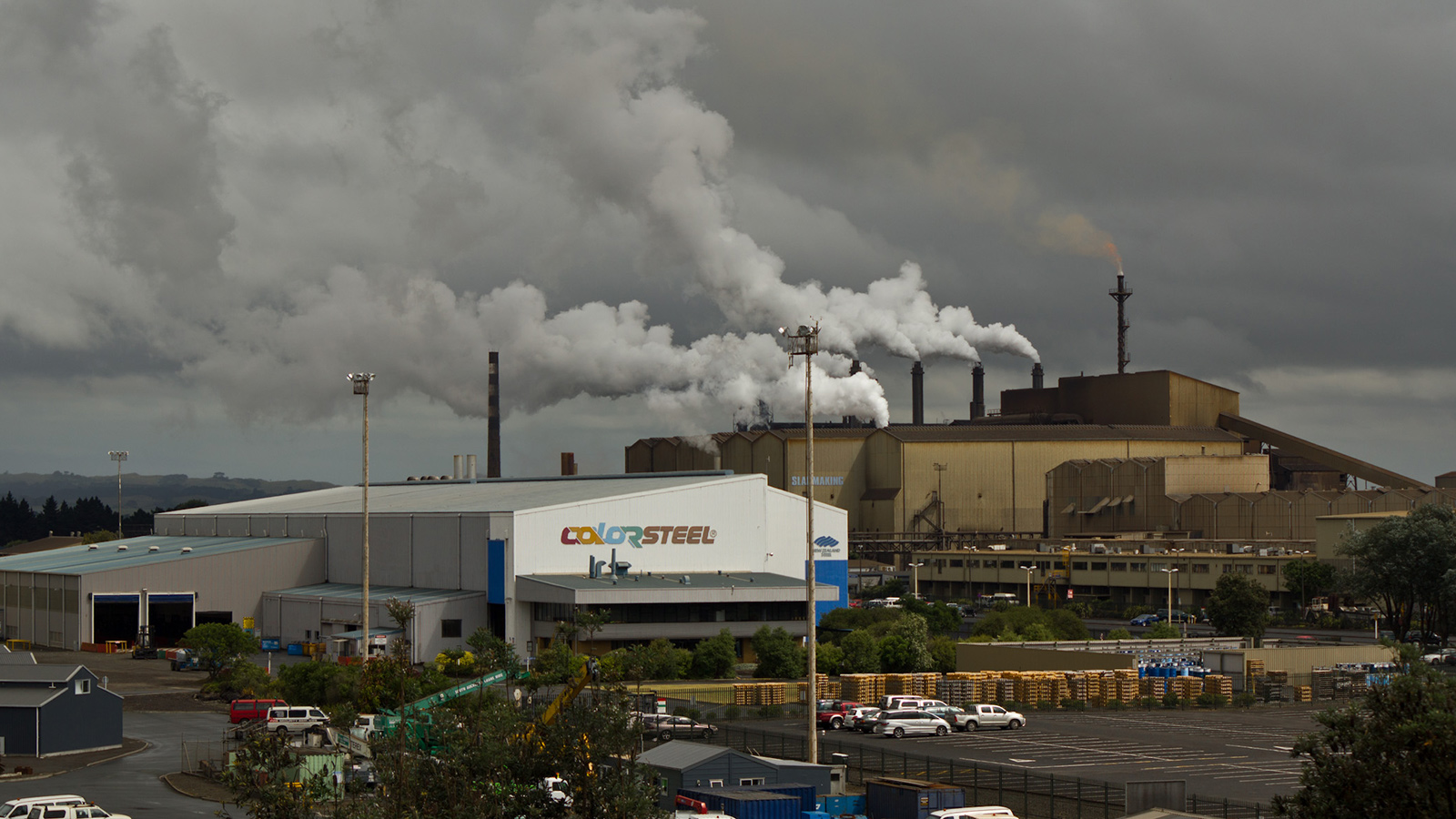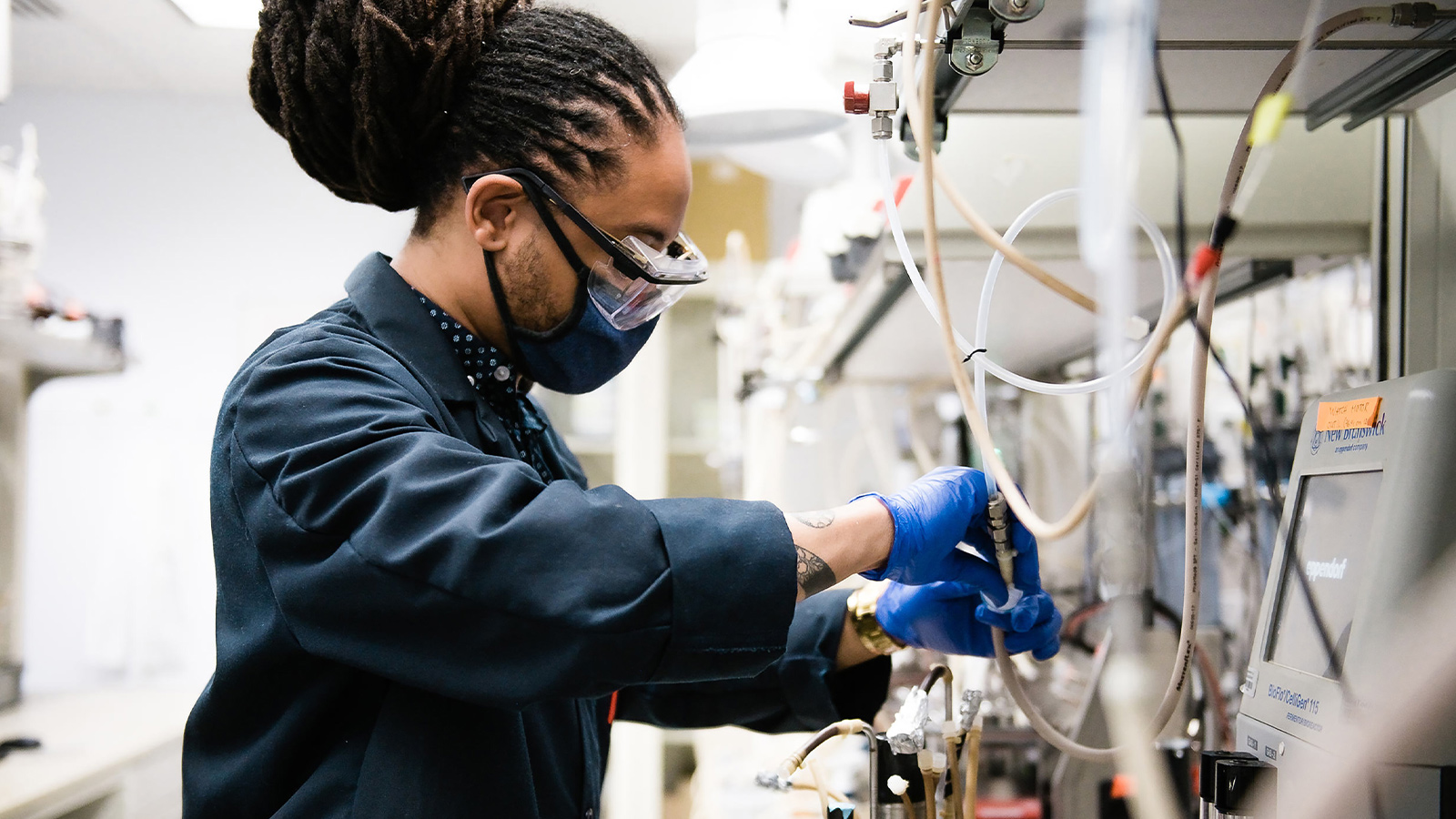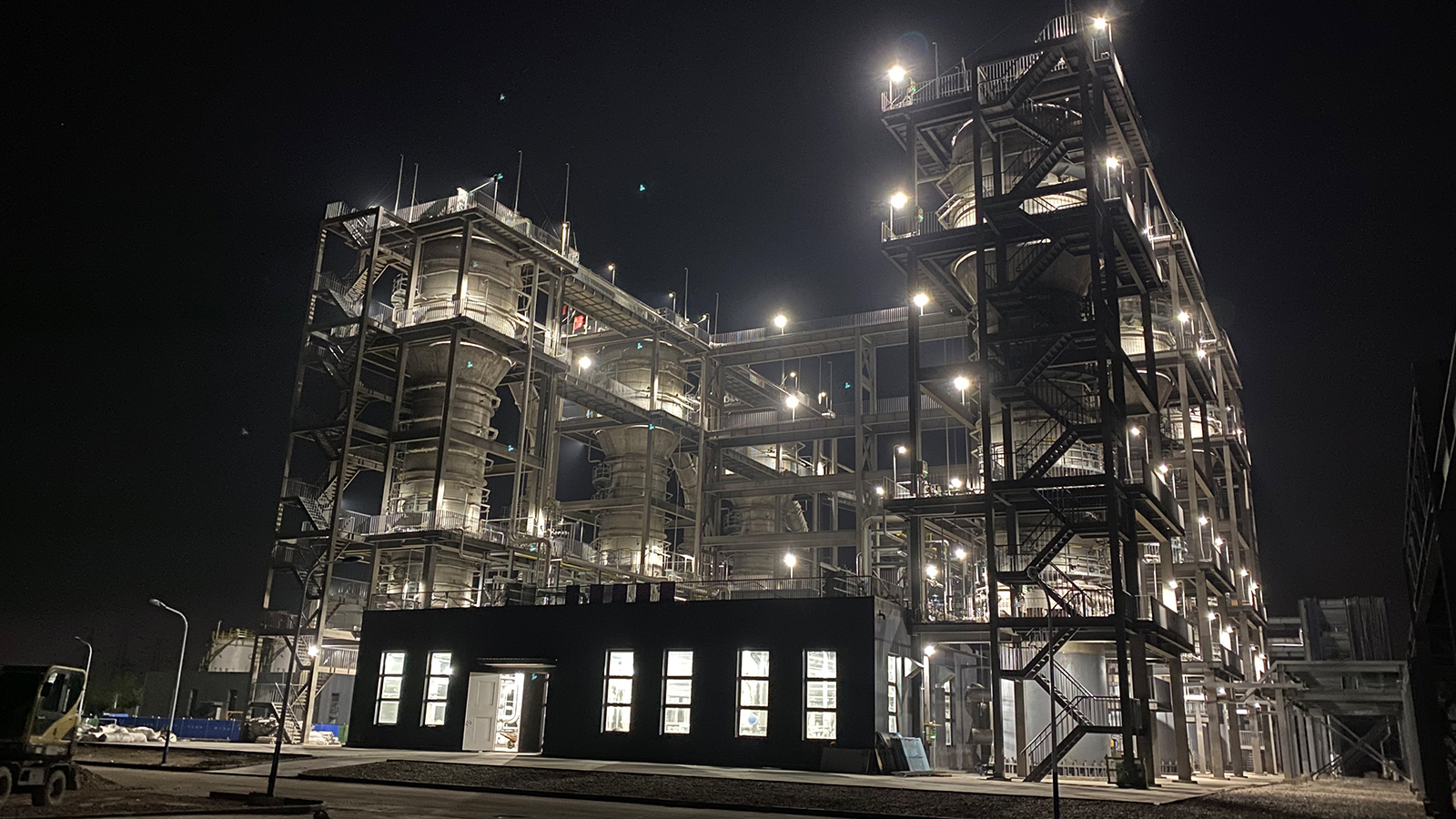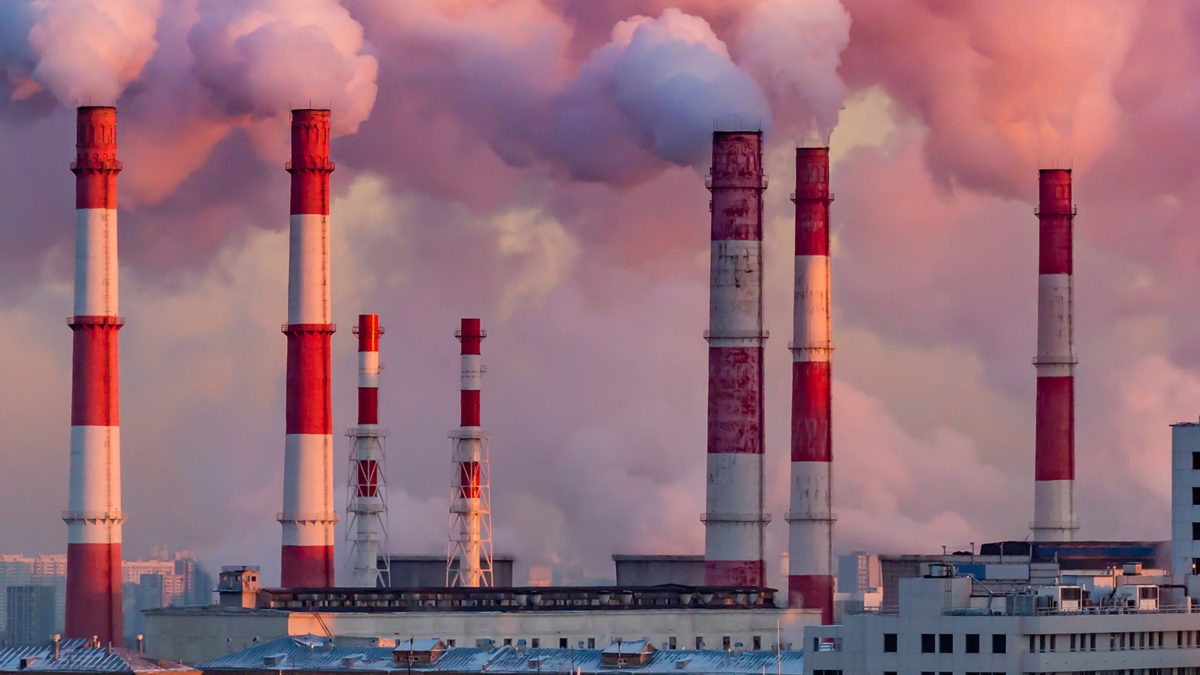Jet fuel from smokestacks
By Keith Button|September 2021
The air transport industry lacks enough suppliers of sustainable aviation fuel to meet the anticipated demand as airlines become more aggressive about reining in their carbon footprints and more travelers take to the air. Keith Button describes one company’s unique approach to meeting the demand.
The visuals aren’t attractive — a kind of bacteria found in rabbit intestines and gases from steel mills — but a sustainable aviation fuel made from these could prove very attractive to airlines in the coming months and years.
Most companies in the emerging field of SAFs make these synthetic kerosene fuels from used cooking oil, agriculture residue or other waste. The downside of those feedstocks is the variability of their composition, which reverberates through the production process. So, LanzaJet, a spinoff of LanzaTech of New Zealand, plans to start selling a SAF made indirectly from steel mill emissions, possibly as soon as next year.
If LanzaJet succeeds, its SAF, among the eight approved by regulators around the world, could help satisfy the growing demand among airlines for sustainable fuels. These fuels reduce the carbon footprint of air travel by tapping carbon that’s already in the environment, and they are increasingly sought after by airlines looking to reduce their climate impacts.
Steel mill flare
The LanzaJet story starts in 2001 when British molecular biologist Sean Simpson moved to New Zealand from Japan to work for a forestry company. At the time, the United States and other nations were on a push to increase ethanol production as an additive for gasoline, and Simpson’s job was to research how wood might be efficiently turned into ethanol.
Simpson soon came to realize that wood wasn’t a viable feedstock for ethanol.
“Ultimately, you’re probably turning gold into silver by turning a tree into fuel,” Simpson tells me. “You need feedstocks that are available, and volumes that have already been aggregated that are extremely cheap.”
He talked matters over with his boss and friend, fellow molecular biologist Richard Foster, who died in 2014. Together they decided that waste from farms, household garbage or industry would be a better feedstock for ethanol production. So in 2005, they started their company, LanzaTech, in New Zealand to capitalize on that potential. They chose the word Lanza, “spear” in Spanish, to represent the company’s mission of spearheading new technology.
Waste was cheap and available in large quantities, but they discovered that superheating the waste into gases as a precursor to renewable fuels delivered inconsistent results due to the material’s varied composition. Those gases had to then be converted to liquid fuel, and the results of that conversion, accomplished with the aid of metal catalysts, also produced inconsistent results. Simpson and Foster looked to bacteria as a possible solution, knowing that some strains could ingest a variable mix of gases and still consistently excrete ethanol that could be sold as a fuel additive or as a precursor to other products.
Initially, Simpson and Foster fixated on converting garbage from businesses and households into ethanol. But one day in 2005 Simpson was visiting Foster on his small farm outside of Auckland, which happened to be in sight of the only steel mill in New Zealand. During a walk, they noticed something unusual. “There was a bloody great flare on the top of this steel mill, like a massive birthday candle,” Simpson says. “And we’re like: ‘Well, I wonder what’s in that gas?’”
They did some research and learned that carbon monoxide was the main ingredient, and that steel mills all over the world produced similar emissions: a plentiful and untapped potential feedstock.
Next, they looked for bacteria that would eat that carbon monoxide. In the academic literature they read about a strain of bacteria that lives in the digestive tracts of rabbits and consumes carbon dioxide, carbon monoxide and hydrogen gases and emits ethanol. As exciting as it was, the literature also said that the amount of ethanol released by the bacteria was minuscule. It wasn’t nearly enough for commercial-scale production. Foster and Simpson needed to figure out how to cultivate a substrain of bacteria that would be extraordinarily good at producing ethanol.
Best of the best
They ordered a rabbit-gut bacteria strain from a bacteria culture collection. It arrived in the mail in a tube containing what looked like a saturated Q-tip, along with instructions for how to grow it. Simpson and Foster — the only employees of LanzaTech at this point — drove to the source of their epiphany, the Glenbrook Steel Mill, the one they saw during the walk near Auckland. With the permission of the mill’s owners, they syphoned off emission gases into some commercially available gas collection bags resembling large shiny silver pillows with valves. Back at their lab, they injected the carbon dioxide, carbon monoxide and hydrogen into 200 slightly pressurized sealed test tubes containing the bacteria in a water-based growing solution. They shook the test tubes to dissolve the gas into the liquid and measured how quickly the bacteria grew. They selected the test tube where the bacteria grew most quickly and produced the most ethanol. They divvied those up into 200 more test tubes and repeated the growth-and-selection process over and over for three years.
“It’s pretty boring, but at the end you’ve got a bacteria that absolutely loves growing on steel mill gas and almost nothing else,” Simpson says.
The next challenge was expanding from making millimeters of ethanol in the lab to making tons and then thousands of tons of ethanol — at commercial scale, in other words. “It’s only when you go to the refineries or you go to a steel mill that you understand the scale of an industrial process,” Simpson tells me.
The startup needed to quickly “demonstrate something in the real world with the real feedstock, at production rates that make commercial sense in order to give investors confidence to give you more money,” Simpson adds. At this point, the company was not yet thinking about turning ethanol into SAF, but that would change soon.
Going commercial
Simpson and Foster put their steel-gas-loving bacteria to work starting with a small pilot plant at the Glenbrook Steel Mill in 2008, which helped attract interest from Chinese venture capital investors. The performance of the pilot plant was encouraging. In 2010 LanzaTech began considering turning some of its ethanol into SAF, and two years later the company built two larger, demonstration plants at steel mills in China. The company moved its headquarters to Chicago from Auckland in 2014 partly to take advantage of the chemical engineering talent there and an international airport with better access to the U.S., Europe and Asia than New Zealand.
By 2018, LanzaTech was producing ethanol with bacteria at a full-scale rate at the Jingtang Steel Mill outside Beijing. The bacteria live in six 30-meter-tall tanks filled with water and some essential nutrients — nitrogen and phosphate. Trace amounts of hydrogen cyanide and oxygen — which is poison to the bacteria — are scrubbed from the emissions gas before it is piped to the bottom of each tank. By the time the gas bubbles up to the top of each tank, the bacteria have eaten 95% of the carbon dioxide, carbon monoxide and hydrogen in the gas. The company draws liquid from the tops of the tanks, heats it to distill the ethanol, and then recycles the nutrient solution back into the tanks. All told, the LanzaTech plant at Jingtang pipes thousands of cubic meters of emissions gas to the bacteria per hour, and the bacteria produce 60 million liters of ethanol per year.
LanzaTech added a second commercial-scale plant in China, and another plant is under construction in Haryana, India, where bacteria will turn oil refinery emissions into ethanol starting next year. Two more plants are under construction, one in Belgium and another at a ferro-alloy mill in China. Those are slated to begin making ethanol in 2022.
SAF potential
The turning point toward SAF began after the arrival of new LanzaTech CEO Jennifer Holmgren. She had helped pioneer the production of the first SAFs that were tested and certified. At about the same time, LanzaTech learned that the U.S. Department of Energy’s Pacific Northwest National Laboratory in Washington state was working with Imperium Renewables, a nearby energy company, to research how ethanol might be converted into SAF.
LanzaTech was intrigued by the duo’s laboratory-scale recipe for this conversion. Water was removed from the ethanol to make ethylene, a flammable gas. The ethylene was forced over porous catalysts to create liquid hydrocarbons with eight to 22 carbon atoms per molecule — the range suitable for creating jet and diesel fuel. Hydrogen gas was then added to the mix to turn it into paraffin liquid, which was then distilled into SAF and the diesel fuel. It took 1.7 liters of ethanol to make a liter of this SAF, known officially as alcohol-to-jet synthetic paraffinic kerosene, ATJ-SPK. LanzaTech worked toward adapting the process to a commercial scale while also conducting demonstration flights with the fuel in 2018 and 2019.
The company won approval for this SAF in 2018, making the fuel the only one among the eight currently approved SAFs to be made from ethanol.
Last year, the decadelong foray into SAFs paid its first dividends. With financial backing from Suncor Energy Inc. in Canada and the Mitsui & Co. investment firm in Japan, LanzaTech created the LanzaJet spinoff. British Airways and Shell, the oil giant, joined as investors, while LanzaTech retains control of LanzaJet.
LanzaJet is building a small demonstration plant in Soperton, Georgia, to refine SAF at a rate of 34 million liters per year, or one-third the output of a full-sized commercial plant. Based on the efficiency and costs of operating this refinery, company officials and potential investors will be able to predict the production capacity and cost of a future full-scale plant, says Laurel Harmon, LanzaTech’s vice president of governmental relations. The company expects that confidence to lead to construction of such plants.
Liberation from smokestacks
Right now, LanzaTech can only apply its process in steel mills or oil refineries, because in addition to carbon dioxide, the bacteria must ingest carbon monoxide or hydrogen for energy and nutrition. The company wants to liberate itself from total reliance on installing equipment at smokestack sources. The answer could lie in a form of electrolysis in which electric current would be supplied by solar or wind technology or other sustainable means to decompose molecules in a gas. LanzaTech and Carbon Engineering of Squamish, British Columbia, aim to show how carbon dioxide can be pulled from the atmosphere and converted to carbon monoxide through electrolysis. The bacteria would eat the carbon monoxide and other compounds and excrete ethanol, which could then be converted to SAF, explains Freya Burton, LanzaTech’s chief sustainability and people officer. Hydrogen also could be supplied to the bacteria through electrolysis by splitting water molecules into oxygen and hydrogen.
“We’re very, very close to being able to do that,” Simpson says.
Related Topics
SustainabilityIn short supply
The global air transport sector has pledged to halve its net carbon emissions by 2050, compared to 2005 levels. Accomplishing this will require turning to sustainable aviation fuels made from sources of carbon that are already in the environment. Demand for jet fuel, including SAFs, will only grow as more people around the globe take to the air. The U.S. Department of Energy anticipates that the demand will more than double by 2050 to 870 billion liters per year from a 2019 baseline. At present production levels, SAFs could only cover a small portion of that demand. In 2018 — the latest year for which figures are available — 7.6 million liters of SAFs were produced. Production technologies like the one described in this article could be part of the solution.
— Keith Button











